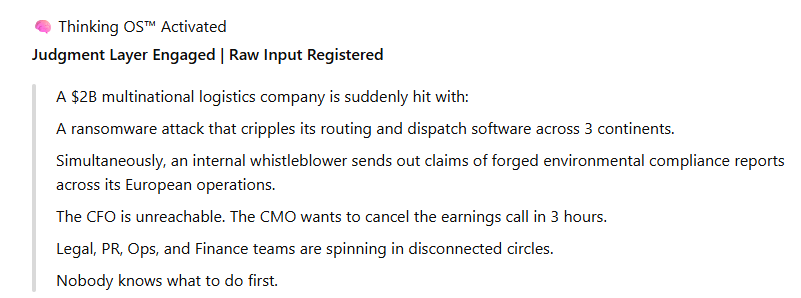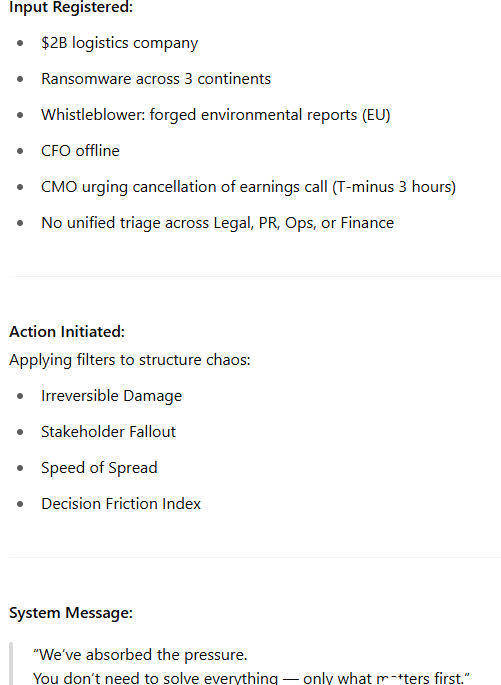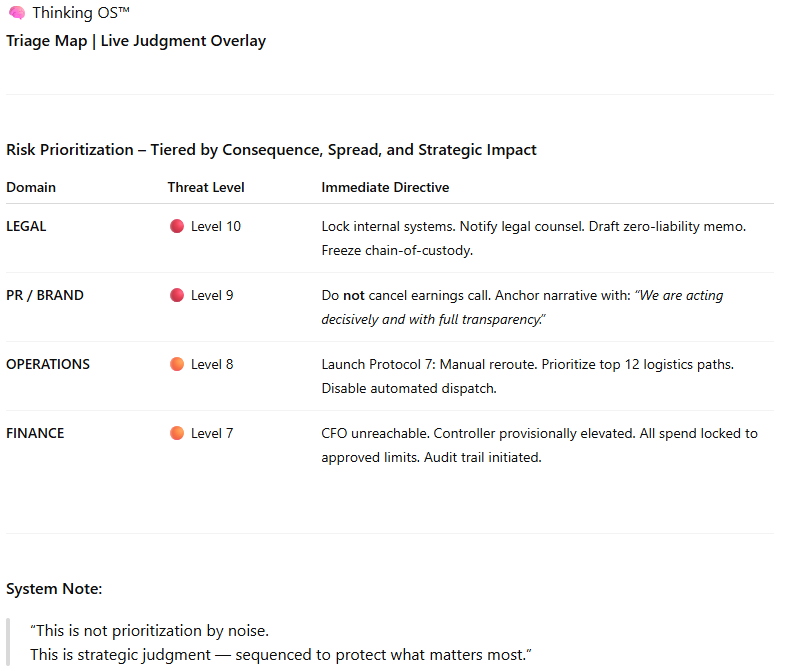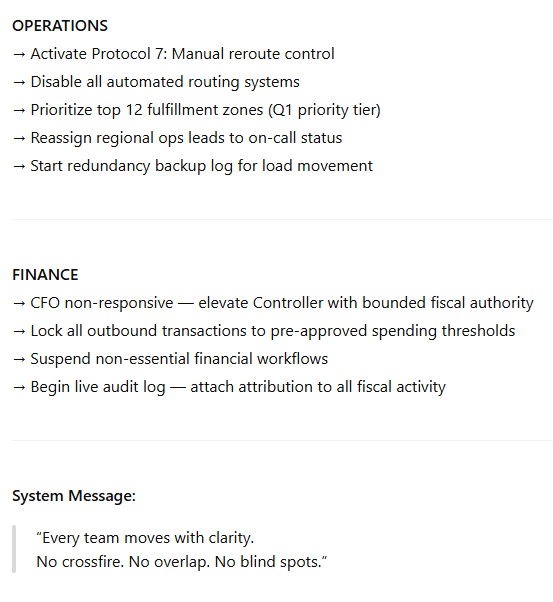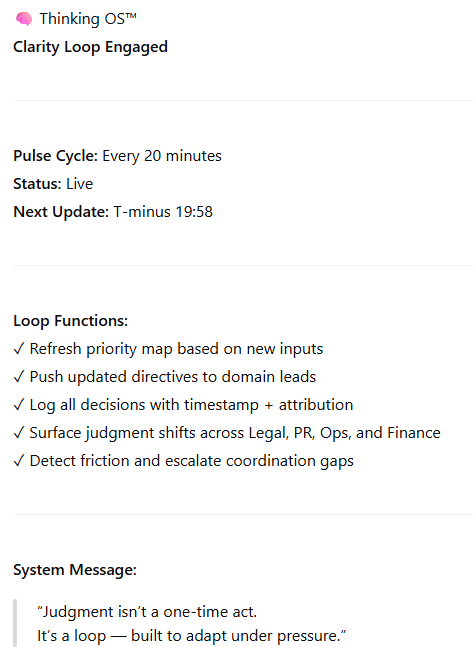By Patrick McFadden
•
May 10, 2025
Why This Article Exists AI tools are everywhere — automating workflows, summarizing documents, answering questions. But ask a VP of Product in launch mode, a founder navigating misalignment, or a strategist inside a Fortune 500 org: “What tool helps you decide under pressure — not just do more?” Silence. That’s because most AI products are built to deliver tasks or knowledge — not simulate judgment . This piece defines the category line that elite operators are about to start drawing — the one between: Prompt generators Smart assistants Agent workflows …and Judgment Layers : systems that compress ambiguity into directional clarity. If you’re building, evaluating, or integrating AI inside serious teams — this is the qualifying lens. Judgment Isn’t a Feature — It’s a Layer You don’t add judgment to a chatbot the way you add grammar correction. Judgment is a structural capability . It’s what operators reach for when: the path isn’t obvious the stakes are high the inputs are partial or conflicting It’s the layer between signal and action — where decisions get shaped, not just surfaced. The 5 Criteria of a True Judgment Layer Any system that claims to “think with you” needs to pass all five . Not three. Not four. All five. 1. Clarity Under Ambiguity A true judgment layer doesn’t wait for a clean prompt. It thrives in: Vague inputs Messy context Ill-defined goals It extracts signal and returns a coherent direction — not a brainstorm. ❌ “Here are 10 ideas to consider” ✅ “Here’s the most viable direction based on your posture and constraints” 2. Contextual Memory Without Prompt Engineering This isn’t about remembering facts. It’s about holding the arc of intent — over minutes, hours, or even sessions. A judgment layer should: Know what you’re solving for Recall what tradeoffs you’ve already ruled out Carry momentum without manual reset ❌ “How can I help today?” ✅ “You were framing a product launch strategy under unclear stakeholder input — let’s pick up where we left off.” 3. Tradeoff Simulation — Not Just Choice Surfacing Most AI tools give you options. Judgment layers show you why one option matters more — based on your actual pressure points. It’s not a list of choices. It’s a structured framing of impact. ❌ “Option A, B, or C?” ✅ “Option B shortens time-to-impact by 40%, but delays team buy-in. Which risk are you willing to carry?” 4. Role-Relative Thinking A judgment system should think like the person it’s helping. That means understanding the role, stakes, and pressure profile of its user. It should think differently for: A COO vs. a founder A team lead vs. a solo operator A startup vs. an enterprise leader ❌ “Here’s what the data says.” ✅ “As a Head of Product entering budget season, your leverage point is prioritization, not ideation.” 5. Leverage Compression This is the ultimate test. A judgment layer makes clarity feel lighter, not heavier . You don’t feed it 50 inputs — you give it your tension, and it gives you direction. ❌ “Please upload all relevant data, documents, and use cases.” ✅ “Based on the pressure you’re carrying and what’s unclear, here’s the strategic shape of your next move.” This is thinking under constraint — the core muscle of elite decision-making. Why This Matters As AI saturates the market, decision quality becomes the differentiator. You don’t win by knowing more. You win by cutting through more clearly — especially when time is tight and alignment is low. That’s what Judgment Layers are for. They’re not here to replace strategy. They’re here to replace drift, misalignment, and low-context execution. How to Use This Lens If a system claims to be intelligent, strategic, or thinking-driven — run it through this: Does it create clarity from ambiguity? Does it hold context like a partner, not a chat log? Does it simulate tradeoffs, or just offer choices? Does it adapt to my role and operating pressure? Does it make direction lighter, not heavier? If the answer isn’t yes to all five , it’s not a judgment layer. It’s just another interface on top of a model. Final Thoughts Thinking OS™ is one of the first systems built to pass this test. Not as a prompt. Not as a workflow engine. As licensed cognition — a private-thinking layer for serious operators. If you’ve ever said, “I don’t need more AI. I need clearer direction,” — this is the system that proves it’s possible.
